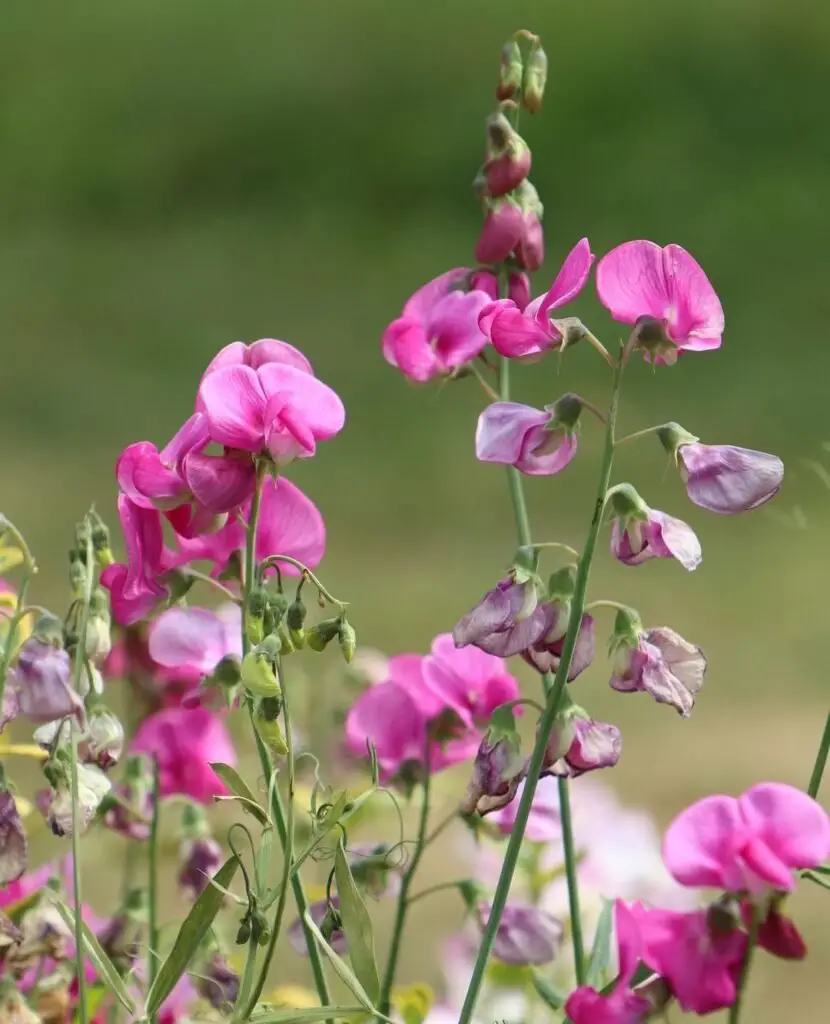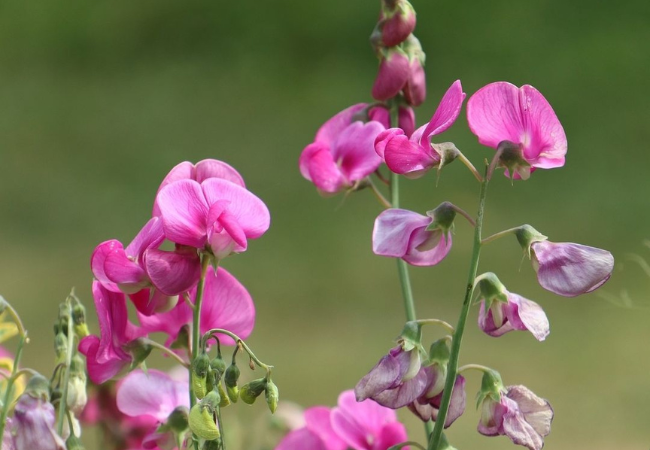Discover the charming Sweet Pea flower: learn how to grow, care for and enjoy these fragrant blooms. Perfect for gardens, bouquets and more!
Sweet peas are beautiful, fragrant flowers that many gardeners love. This article will help you learn all about sweet peas and how to grow them in your garden.
Here’s an information chart for Sweet Peas:
| Category | Information |
|---|---|
| Botanical Name | Lathyrus odoratus |
| Common Name | Sweet Pea |
| Plant Type | Annual |
| Hardiness Zone | Zones 2-11, depending on variety |
| Sun Exposure | Full sun to part shade |
| Soil Type | Rich, well-draining |
| Watering | Regular |
| Growth Habit | Climbing, vining |
| Height/Spread | Up to 6-8 feet tall, spreads 1-2 feet |
| Special Features | Fragrant flowers in a variety of colors, attracts butterflies and bees, excellent cut flowers |
What Are Sweet Peas?

Sweet peas (Lathyrus odoratus) are climbing plants with pretty, colorful flowers. They smell nice and come in many colors like pink, purple, white and red. People often grow them on fences or in pots.
Why Grow Sweet Peas?
- They smell great: Sweet peas have a strong, sweet scent.
- Pretty flowers: The blooms look lovely in gardens and in vases.
- Easy to grow: Most people can grow sweet peas without much trouble.
- Attract helpful insects: Bees and butterflies like these flowers.
How to Grow Sweet Peas
Planting:
- Plant sweet pea seeds in early spring or fall, depending on where you live.
- Soak the seeds overnight before planting to help them grow better.
- Plant them about 1 inch deep in the soil.
For more planting tips, visit the Cooperative Extension System.
Sunlight:
Sweet peas like full sun, which means at least 6 hours of direct sunlight each day.
Water:
- Keep the soil moist but not too wet.
- Water deeply once or twice a week, depending on the weather.
Soil:
They grow best in soil that drains well and has lots of organic matter.
Support:
Sweet peas are climbing plants, so give them something to climb on, like a trellis or fence.
Fertilizer:
Use a fertilizer that’s low in nitrogen but high in phosphorus and potassium.
The University of Minnesota Extension has more detailed information on growing sweet peas.
Caring for Sweet Peas
Pruning:
- Cut off dead flowers regularly to encourage more blooms.
- Trim the tips of the vines to make the plants bushier.
Pests and Diseases
Watch out for aphids and powdery mildew. If you see problems, ask at a garden store for safe solutions.
Using Sweet Peas in Your Garden
- Climbing plants: Grow them on trellises, fences or arches.
- Container gardens: Plant them in big pots with supports.
- Cut flowers: Sweet peas make great bouquets.
- Fragrant gardens: Plant them near seating areas to enjoy their scent.
Benefits of Sweet Peas
- Attract pollinators: Bees and butterflies love these flowers.
- Natural air fresheners: Their sweet smell can fill your garden.
- Mood boosters: Bright, colorful flowers can make people feel happy.
- Encourage outdoor time: Growing sweet peas can get you outside more.
Learn more about the benefits of gardening from the National Garden Bureau.
Things to Remember
- Sweet peas grow best in cooler weather. They might not do well in very hot summers.
- Don’t eat sweet peas. Even though they’re called “peas,” they’re not for eating.
- Save seeds from your plants to grow more next year.
- Sweet peas make great gifts when cut and put in vases.
For more flower-growing tips, check out the American Horticultural Society.
Growing sweet peas can be a fun and rewarding hobby. They’re pretty, smell nice and aren’t too hard to take care of. Whether you’re new to gardening or have been doing it for years, sweet peas can be a great addition to your garden. Give them a try and enjoy their beauty and fragrance all season long!
For more gardening tips and plant care guides, visit usagardenhub.com.

